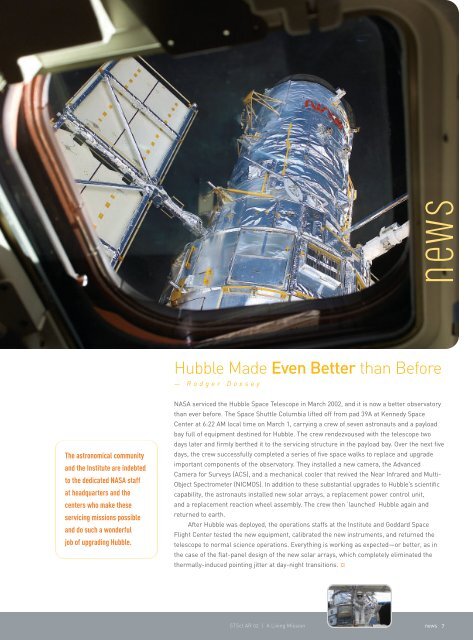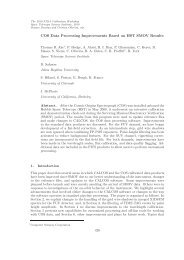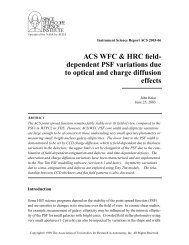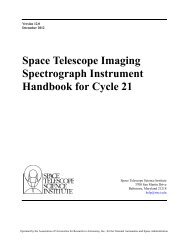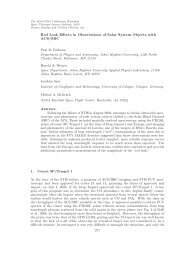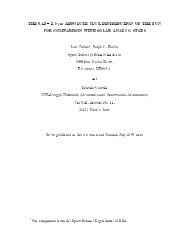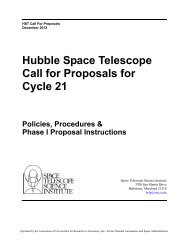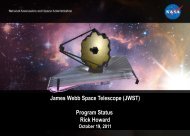STScI Annual Report 2002: A Living Mission
STScI Annual Report 2002: A Living Mission
STScI Annual Report 2002: A Living Mission
Create successful ePaper yourself
Turn your PDF publications into a flip-book with our unique Google optimized e-Paper software.
The astronomical community<br />
and the Institute are indebted<br />
to the dedicated NASA staff<br />
at headquarters and the<br />
centers who make these<br />
servicing missions possible<br />
and do such a wonderful<br />
job of upgrading Hubble.<br />
Hubble Made Even Better than Before<br />
— Rodger Doxsey<br />
news<br />
NASA serviced the Hubble Space Telescope in March <strong>2002</strong>, and it is now a better observatory<br />
than ever before. The Space Shuttle Columbia lifted off from pad 39A at Kennedy Space<br />
Center at 6:22 AM local time on March 1, carrying a crew of seven astronauts and a payload<br />
bay full of equipment destined for Hubble. The crew rendezvoused with the telescope two<br />
days later and firmly berthed it to the servicing structure in the payload bay. Over the next five<br />
days, the crew successfully completed a series of five space walks to replace and upgrade<br />
important components of the observatory. They installed a new camera, the Advanced<br />
Camera for Surveys (ACS), and a mechanical cooler that revived the Near Infrared and Multi-<br />
Object Spectrometer (NICMOS). In addition to these substantial upgrades to Hubble’s scientific<br />
capability, the astronauts installed new solar arrays, a replacement power control unit,<br />
and a replacement reaction wheel assembly. The crew then ‘launched’ Hubble again and<br />
returned to earth.<br />
After Hubble was deployed, the operations staffs at the Institute and Goddard Space<br />
Flight Center tested the new equipment, calibrated the new instruments, and returned the<br />
telescope to normal science operations. Everything is working as expected—or better, as in<br />
the case of the flat-panel design of the new solar arrays, which completely eliminated the<br />
thermally-induced pointing jitter at day-night transitions. �<br />
<strong>STScI</strong> AR 02 | A <strong>Living</strong> <strong>Mission</strong><br />
news 7


